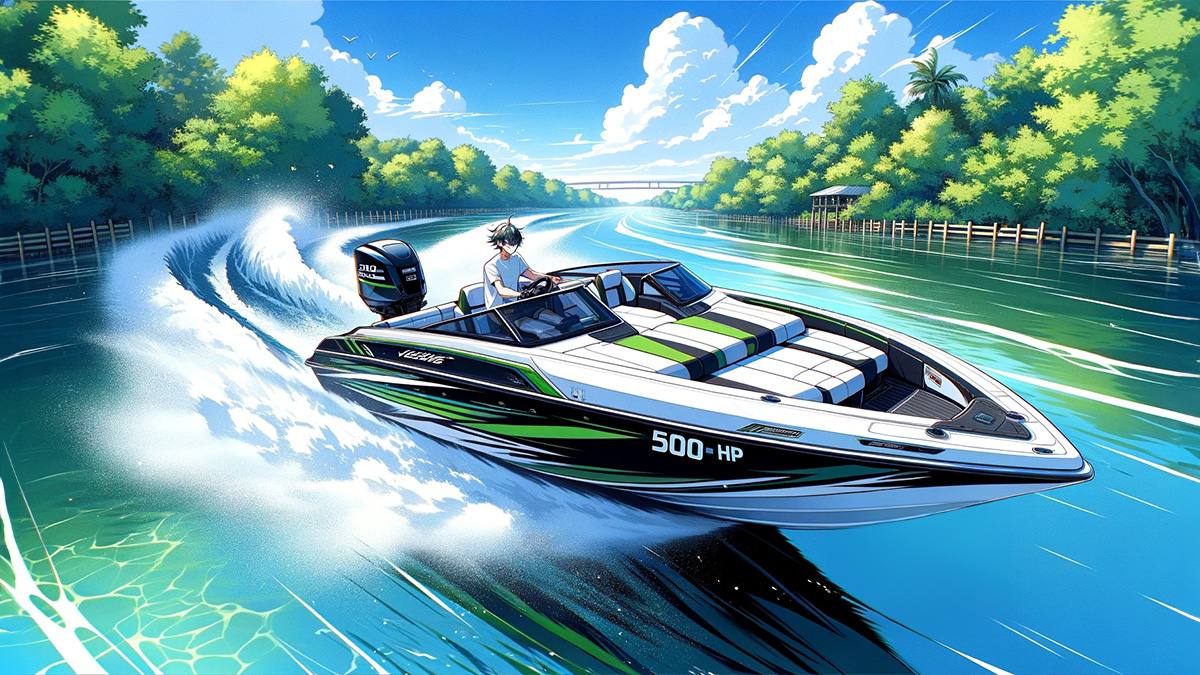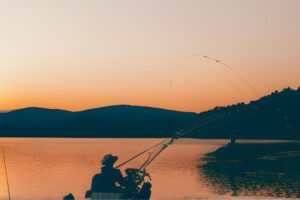A boat’s hull shape is one of the most important factors influencing its performance on the water.
The hull must balance numerous design priorities, including speed, stability, capacity, and efficiency. Even small variations in hull design dramatically change a boat’s handling characteristics and suitability for different boating applications.
Displacement Hulls
Displacement hulls are the most common hull type, found on most recreational powerboats and sailboats. They push water aside to float on top of it, rather than planing over the surface. The maximum speed of a displacement hull is limited and determined by its waterline length. Longer waterlines enable a higher hull speed, but displacement hulls generally top out at around 1.34 times the square root of their waterline length in feet.
Because they sit in the water instead of on top of it, displacement hulls with a round or wide beam shape have more initial stability than narrow, low-drag designs. However, they also create more resistance moving through the water. Finer bow and stern sections with less wetted surface area reduce drag for better fuel economy. A canoe hull shape demonstrates an extremely fine displacement hull optimized for efficient paddling over speed. Talk with mastercraft boat dealers in texas to see if this option is right for you.
Planing Hulls
Planing hulls are shaped to lift partially clear of the water at speed, reducing wetted surface area and enabling much faster speeds. Typical planing hulls include flat-bottomed Jon boats, vee hulls, and catamarans. The abrupt curve of the vee deflects water at high speeds for a smooth and stable ride. Flat-bottomed skiffs plane easily, but the lack of shape provides little stability. Catamarans offer a huge platform above the waves at speed.
The angle, width, and depth of a planing hull all influence its performance. Wider and flatter shapes plane more easily while narrow, deep vee hulls handle better at speed. Too much deadrise angle makes it harder for a heavy hull to transition onto plane as well. Since planing efficiency improves dramatically over 15-20 knots, power requirements increase exponentially below this threshold.
Sailing Hulls
Sailboats need lateral resistance to capture energy from the wind. Full-keeled hulls provide tracking through the water but limit maneuverability and speed. Faster fin keel designs are compromised by less stability for ocean voyaging. Multi-hull shapes range from simple catboats to extreme racing trimarans. The thin hulls used reduce drag while their wide beams provide immense low-center-of-gravity stability.
Hull Appendages
The keel, centerboard, rudder, and other appendages hanging below the hull also contribute substantially to boat performance. Deep draft keels with lead bulbs lower a sailboat’s center of gravity for better stability under sail. The side-to-side resistance of shoal draft full keels balanced designs keeps them on course without sliding sideways. Daggerboards enable beach launching while still providing the lift of a deep keel. High aspect ratio foils provide significant lateral resistance with minimal drag.
Hull Speed’s Not the Whole Story
While hull speed predicts a displacement boat’s maximum velocity, just looking at this figure doesn’t tell the whole story when comparing designs. The amount of power or sail area required to reach that speed, stability, comfort, and other aspects of performance matter greatly too. Planing hulls skirt the hull speed limitation for truly fast boats that plane over the top of the water. By understanding the basics of how hull shape influences performance, boat buyers can pick the best designs for their needs.



